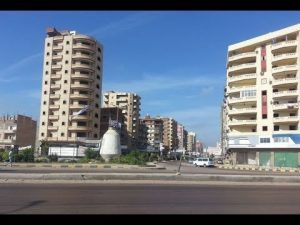El Beheira Travel guide
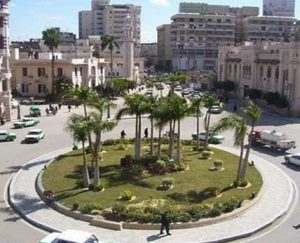
El Beheira ( Behera or Beheyra) is one of the coastal governorates in Egypt overlooking the Mediterranean Sea. It locates About 135 km away from Cairo and bordered with Marsa Matrouh from the east and Rashid Branch of the Nile from the west. It is famous for numerous industries including mainly driven from agriculture, fishing, as well as textile, chemical, carpet, and electricity industries. It comprises of 13 centers and 14 cities and provides its inhabitance with a wide range of facilities and services to encourage investment in it. On top of the cities in El Beheira come El Nubereyya that is renowned for its compound power station and Kafr El Dawar that is regarded as one of the important industrial zones in Egypt. Additionally El Beheira governorate occupies a prominent position among tourist governorates in Egypt for its great history and the popular tourist attractions it encloses. Most of the tourist prefer visiting this governorate because it encloses a great variety of monuments that date back to various eras of all the highly attractive Pharaonic , Coptic , and Islamic monuments.
Damanhur
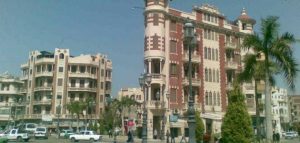
Damanhur is the capital of El Beheira Governorate that locates on the coast of the Mediterranean Sea about 160 km away from Cairo on El Mahmoudeya Canal. It is a city of a great history dating back to the Pharaonic Era when it was called Time-en-Hor or "Village of Horus from" which the current name is derived. During the Roman Era it was the capital of the 15th Nome of Lower Egypt and known as Hermopolis Mikra. Nowadays it is regarded as one of the major trade centers in the governorate and in Egypt as a whole especially for rice and cotton trade. The main economic resources of the city are driven from administrative services, agriculture, as well as textile and fruit packing industries. It has no monuments, yet it is visited by tourists usually at the time of Moulid Sheikh Abu El Rish or Saint Abu El Rish festival and other local festivals that foreigners prefer attending for enjoying direct interaction with native Egyptians.
Idco City
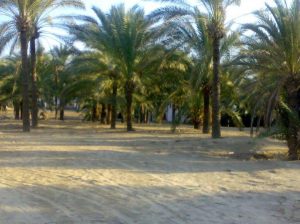
Idco is one of the coastal cities overlooking Idco Lake in El Beheira Governorate bordered with Rasheed and Damanhur from east Abu Hommos city from the south and Kafr El Dawar in the west. It comprises of a large number of smaller cities and villages and a wide range of agricultural lands. In addition to agriculture, the city has many other sources of income including textile factories, and petroleum companies. The government provides the inhabitants of the city of a full range of facilities and services including education, health care, transportation, water supply and sanitation services.
El Delengat
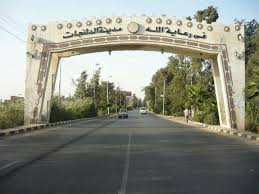
El Delengat is one of the centers of El Beheira Governorate in Egypt. It locates 22 km southward Damanhur and few meters southward Kom Hamada City. It comprises of a number of smaller cities and villages such as Teba, Kom Zumran and El Wafaeya and others. The majority of the inhabitants are nomads and Farmers. The main sources of income for this center are agriculture and industry.
El-Mahmoudiya City
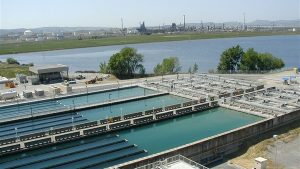
El-Mahmoudiya is a city on the bank of the River in El Behera governorate bordered by Idco from the north, Damanhour from south, and Abu Hommos from the west. It covers about 180 km and comprises a number of smaller cities and villages. The government provides the city with all necessary services and facilities for the inhabitants who are almost farmers. The main economic resources of which are driven from agriculture and commerce. Near the city, there are a number of cemeteries and archeological sites of little importance, such as Sidi Uqaba , Kom El-Ghuraf , Kom El-Wast and Kom El-Ahmar .
El Rahmania City
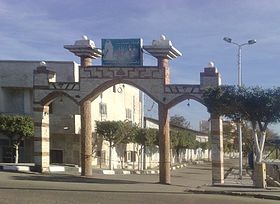
El Rahmania is one of the cities within El Baheira Governorate on Rasheed baranch of the Nile bounded by Abu Hommos and Damanhur from the east, Shobrakhet from the south, and El Mahmoudiya from the north. It covers about 120 km and the majority of its land is agricultural one. The main economic resources of the city are derived from agriculture and it is famous for the crops of wheat,rice, and cotton and other crops.
Itai El Baroud City
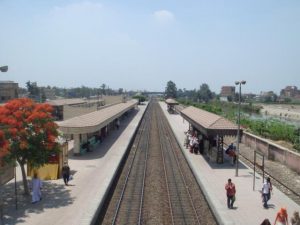
Itai El Barud, one of the localities of El Beheira Governorate, locates about 140 km away from Cairo and about 84 km away from Alexandria and bounded by Kafr El Zayat city from the north and Damanhur from the south. It comprises of a number of smaller towns and villages and the prominent activity for its inhabitants is farming.
Abu El-Matamir
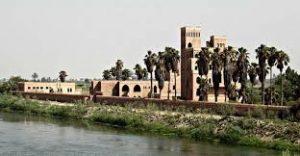
Abu El Matamir is a city in El Beheira governorate , with a population of both Bedouins and farmers. It is situated in the area to the south of Alexandria and Lake Mariut, extending to the Western Desert. The importance of the city is attributed to the existence of some important Pharaonic Necropolises in it or next to it. Among the ancient cemeteries discovered in the vicinity of the town are: Tell Makboura, Tell El Jil, Kom El Adda, Tell Trugi, Abu Gudour. All these cemeteries lie beneath modern villages. Interestingly, archeologists managed to find some remains of pottery or some blocks dating back to the Ptolemaic Era.
Kafr El Dawar
Kafr El Dawar is an important industrial city in El Beheira governorate that comprises of a number of smaller towns and villages. It is renowned for electricity generation as well as textile and fruit packing industries. It is a city of a great history because its lands witnessed a famous battle in Egyptian history which is Kafr El-Dawar Battle that took place between the Egyptian army headed by Ahmed Orabi and the British army during the 1882 Anglo-Egyptian War. The battle ended with Orabi meeting with victory over the British who had to retire their troops from Alexandria . Changing their strategy, the English later attacked Egypt from the East, in the Suez Canal area, and succeeded in beating Orabi's army in El Tell El Kebir. In the vicinity of the city, there are a great number of ancient cemeteries like: Kom El-Hag, Kom Ishu, Kom El-Farag, Kom El-Mahar, Sidi Ghazi, Kom Defshu, Kom El-Terfayeh, Kom El-Dahab, Kom Mazen, Kom El-Qadi, Tell El-Kanaies, Kom El-Giza, Kom El-Hamam and Tell Sherif Khalaf. In all these areas there can only be found remains of pottery and some rocks from the Ptolemaic Era.
Rosetta (Rasheed)
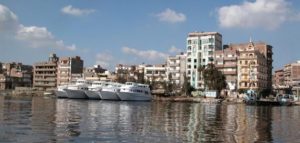
Rosetta or Rashid is a port city in El Beheira Governorate on the Mediterranean Coast in Egypt. Distinctively, Rasheed is distinguished by the abundance of the Islamic monuments in it to the extent that it is planed to make of it an open museum for Islamic art. Rosetta occupied the position of Alexandria being the major port Egypt after the Ottoman conquest in the 16th century. Notwithstanding, it began to decline against Alexandria since the 2nd half of the 19th century. In 1799, a French soldier found the famous Rosetta Stone that later helped Champollion resolve the ideograms of the Ancient Egyptian language. In 1807, the army of Mohamed Ali and the people of Rosetta defeated the English army that tried to occupy Egypt. Within its limits, the city comprises 22 monumental residences, 12 mosques, mills, castles and public baths, the majority of which date back to the Ottoman Era. Near Rosetta, there are some cemeteries and archeological sites that date back to the Greco-Roman Period such as: Tarbiyat El-Add, Tarbiyat El-Alayem, Abu Mandour and Tell Dibi.
Kom Hamada
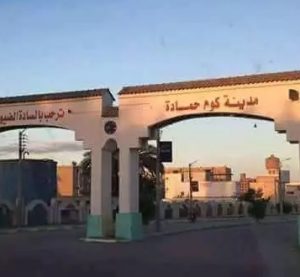
Kom Hamada is a canter in El Beheira Governorate that encloses a number of smaller cities and villages such as Kom Hamada City. It is famous for its full range of fertile agricultural land that covers about 1230 km and its crops of fruit and vegetables.
Shobrakhit
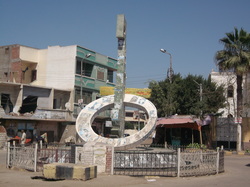
Shubrakhit is one of the centers of El Beheira Governorate on Rashid branch of the Nile. It is bordered with El Rahmaneya to the north, Itai El Baroud to the south, Damanhur to the west and Rasheed to the east. It comprises a large number of smaller cities and has a great history since its land witnessed the battle between Egyptians and Napoleon troops. It is famous for being the birthplace for many famous figures in Egypt including El Sheikh Mohamed Abdo and the singer Mohamed Abd El Motaleb and many other figures.
Abu Hommos
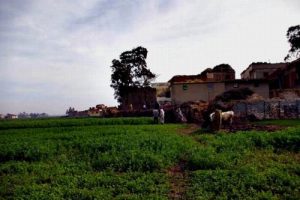
Abuhommos is a city in El Beheira Governorate bordered with Kafr El Dawar from the west and Hosh Eissa, El Mahmoudeya and Damanhour from the east, Abu El Matamir from the south, and Edko and Rasheed from the north. It was divided recently into two territories which are Abo Hommos and Kafr El Dawar and it covers about 530 km. The name of which is driven from the name of a fisherman who had been dwelling in a little cottage around this area in the past. In the vicinity of the city, there are a great number of ancient cemeteries and archeological sites like: Sidi Youssuf, Kom Hassan, Kom Khaleesh, Kom El Qanater, Kom El Boos, Kom Debaa El Bahri, Kom Debaa El Qebli, Kom Tagala, Kom Hashiem, Kom Aziza, Abureh, Tell Bisintawy, Tell Nakhlah, Ganadi, Kom Barsiq, Kom Saieda, Tell el Qarawi, Geradat, Balbaah, and Kom Sebah. In all these areas one can only find remains of pottery and some rocks from the Greco-Roman Era. The government provides the inhabitants of the city with all the facilities and services of education, health care services, wire and wireless telecom services and so to attract more people for living in such coastal places and reduce the crowd of Cairo.
More about El Beheira Travel guide
Wadi El Natron
Some 23 meters below the sea level, lies the town of Wadi El Natrun in El Beheira Governorate ,about 90 km north-west of Cairo. Wadi...+
Read MoreAnba Beshoy Monastery
The monastery was founded by Saint Beshoy in the 4th century. Like the other buildings in the area, it suffered the attacks of the d...+
Read MoreThe Monastery of Saint Macarius (Abu Maqar)
Probably the first monastery in the valley, the monastery was erected in the 4th century by Saint Macarius of Egypt. In the 6th century, the...+
Read MoreDeir (Monastery) El-Surian
Dating back to the 6th century, the monastery of El Surian was built by the monks of Saint Beshoy Monastery who were opposed to Juli...+
Read MoreDeir (Monastery) El-Baramus
Dedicated to the Virgin of Baramus, Deir El-Baramus (also named the Monastery of the Romans) is probably the first monastery established in the Wadi...+
Read More